Office/Brewery, Phase Two

It’s been a much longer process than I had expected at the start, but I love the space. It’s only very recently suitable for use as an office with electricity, insulated and conditioned space, and finished to the point of being comfortable, but it’s already done a lot for my concentration. Without the distractions of kids and pets, I can keep my focus for much longer stretches of time.
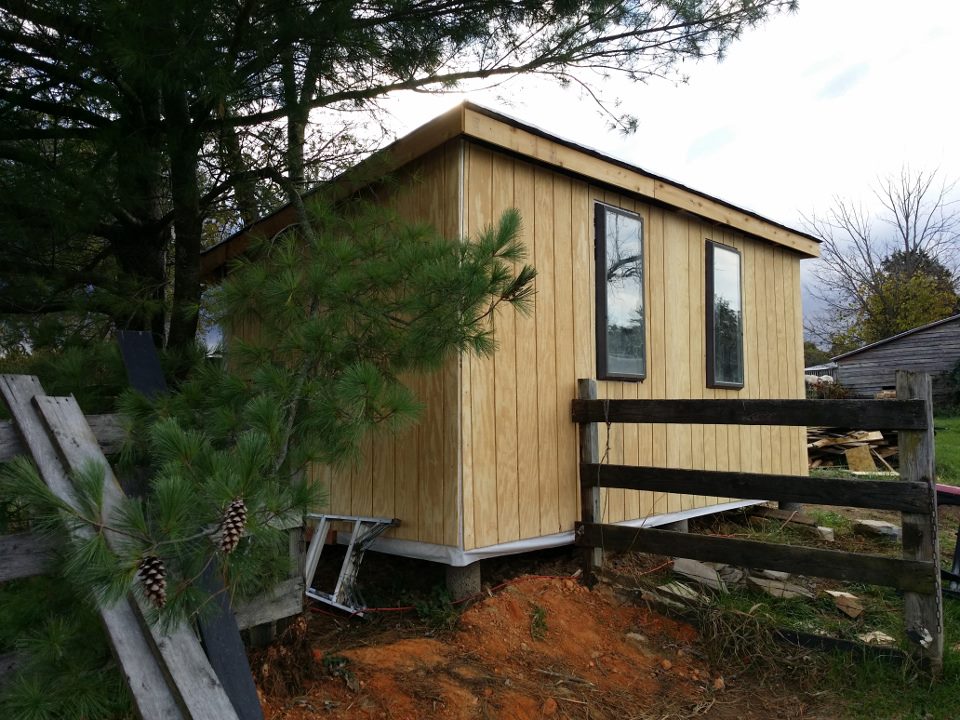
Getting the space “dried-in” wasn’t much of a trick. It involved some windows and skylights (that I used as windows) that I picked up from the ReStore (LOVE the ReStore), a lot of OSB, fiberglass insulation, housewrap, and T-111. It went quick and had me thinking the rest was going to be a snap. That turned out not to be the case, but mostly because I went very shed-chique for the exterior and opted for something a little more fun inside.
The ceiling was the first of the huge-complications-that-took-forever. The design constraints were 1) I want to see the rafters and 2) the ceiling HAS to be insulated. There was also a soft constraint that, if possible, I wanted to use the pile of old Pergo flooring to make it look like I’d used boards in the ceiling.
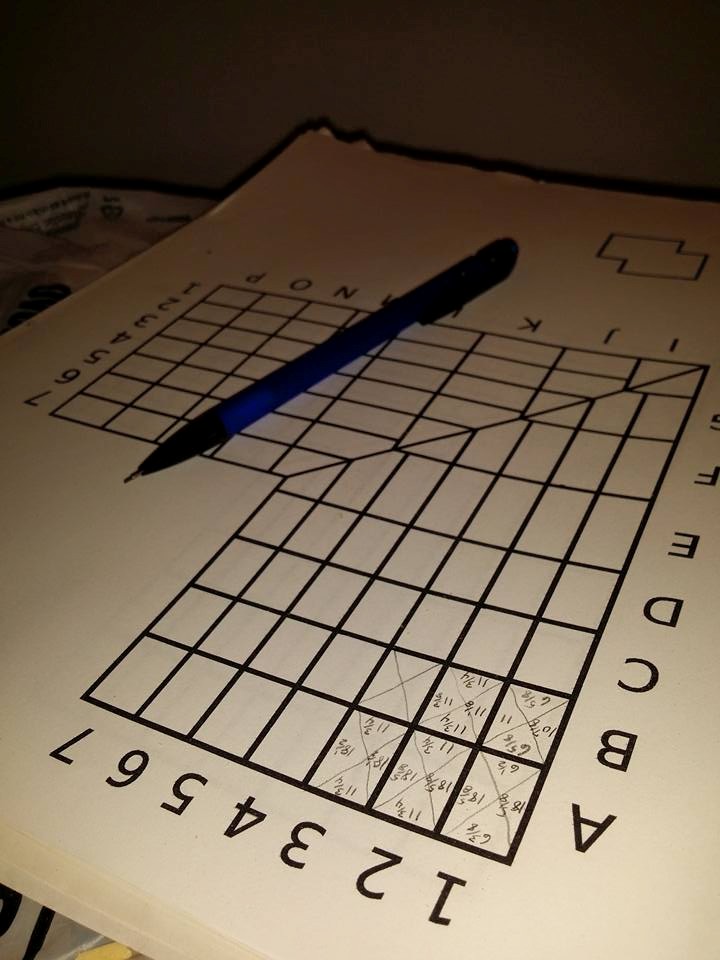
Like lots of user requirements, mine sounded simple because it could be quickly expressed with just a few words. But my design constraints, especially the one about the Pergo, made things a bit time consuming.
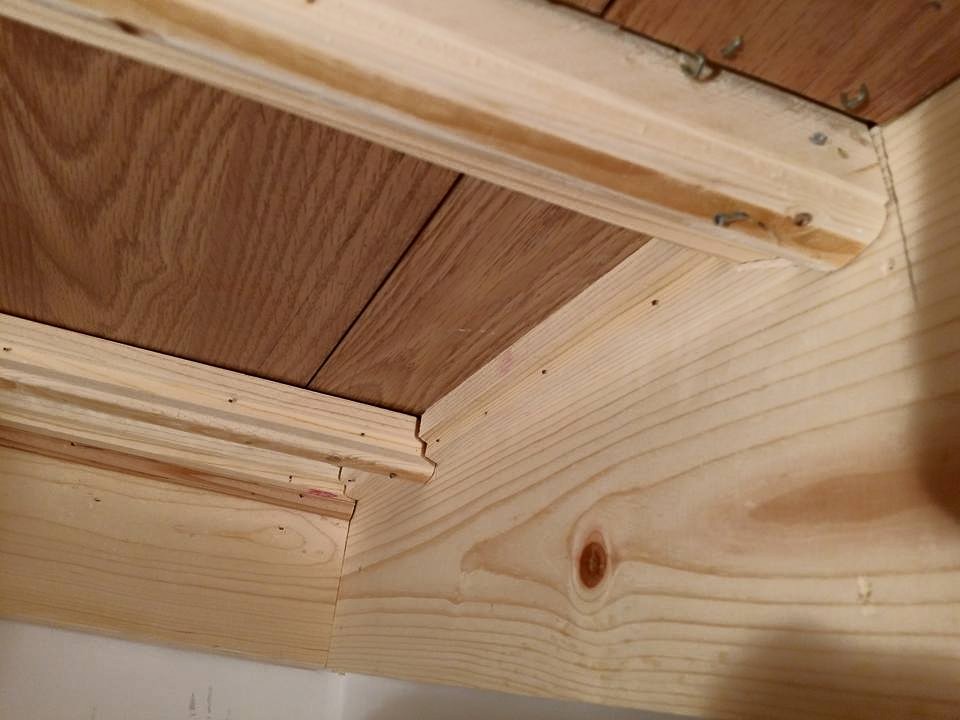
The insulation was pretty straightforward. There’s a product available at Lowes that’s about an inch thick, it’s foam, and covered with foil. There really wasn’t much else out there, so that’s what I went with. The rafters are true 2x4s, so that left about 3 inches exposed, which was perfect if I could use the Pergo, which is all of a quarter-inch thick.
The problem is that simply laying Pergo in between the rafters just wasn’t going to work. There was nothing to nail to and it’s designed to lay on a floor, not hang from a ceiling. Plus, it didn’t really look so great with seams showing in both directions.

A friend suggested a tray ceiling of sorts might accomplish what I was going for and, lacking a better idea, I went with it...and went with it...and got tired of it...and went with it some more. It was a LONG project, but it came out great.
Post-ceiling, the pace picked up again. I stained the exterior and the electrical system and drywall were a snap.
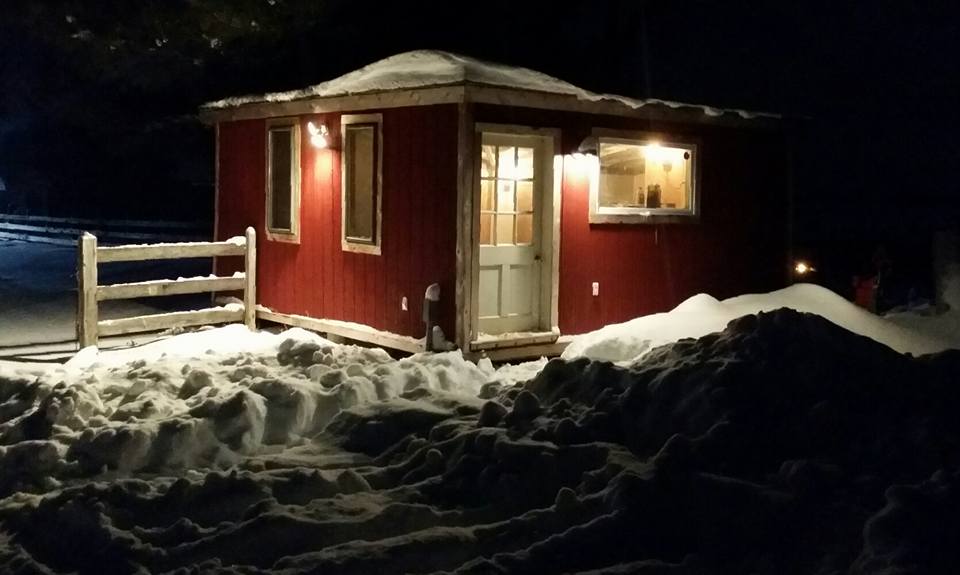
Compared to other projects I’ve been involved in, this was not much surface area. My brother-in-law gave me a pile of wormy chestnut that he’d pulled from his house in a renovation, so I covered a few walls in that to break the space up. I laid some oak floors and hung a few light fixtures too.
But I had to bring all that to a screeching halt because, you know, I gotta be me. Being me in this case involved a very custom bar top made from a 200-year old oak floor board that had been liberated from the barn renovation and some circus mojo.
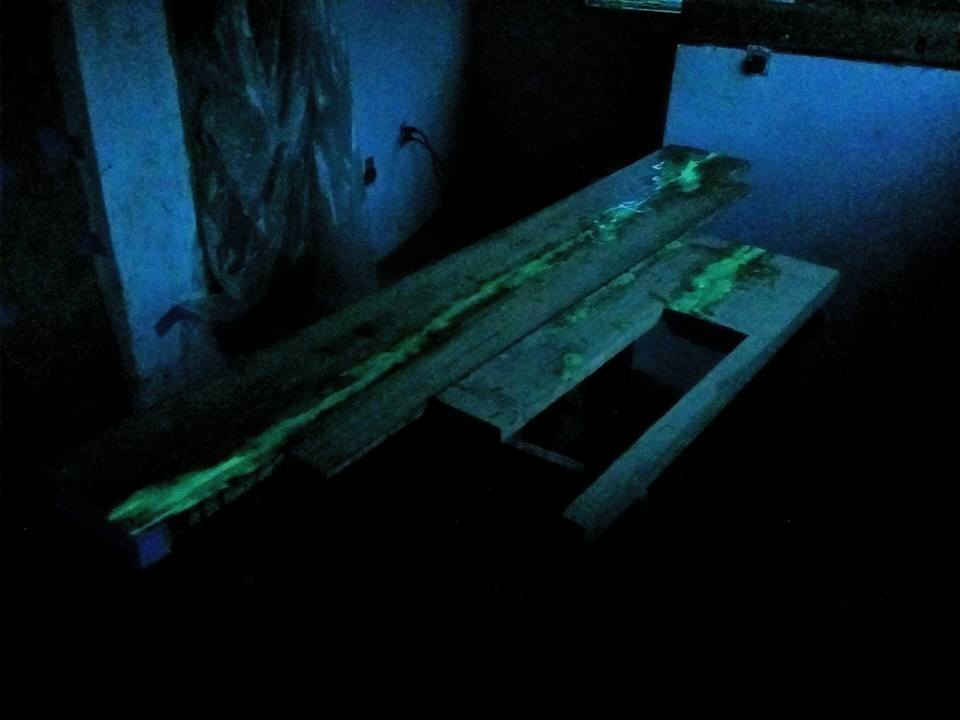
The bar top is made from a really thick oak plank that was made from a tree that was likely a contemporary of the cherry tree that George Washington felled as a child. A friend of mine helped me plane it down to a semblance of flat-and-untwisted, then I filled it with glow in the dark goo and covered it in resin.
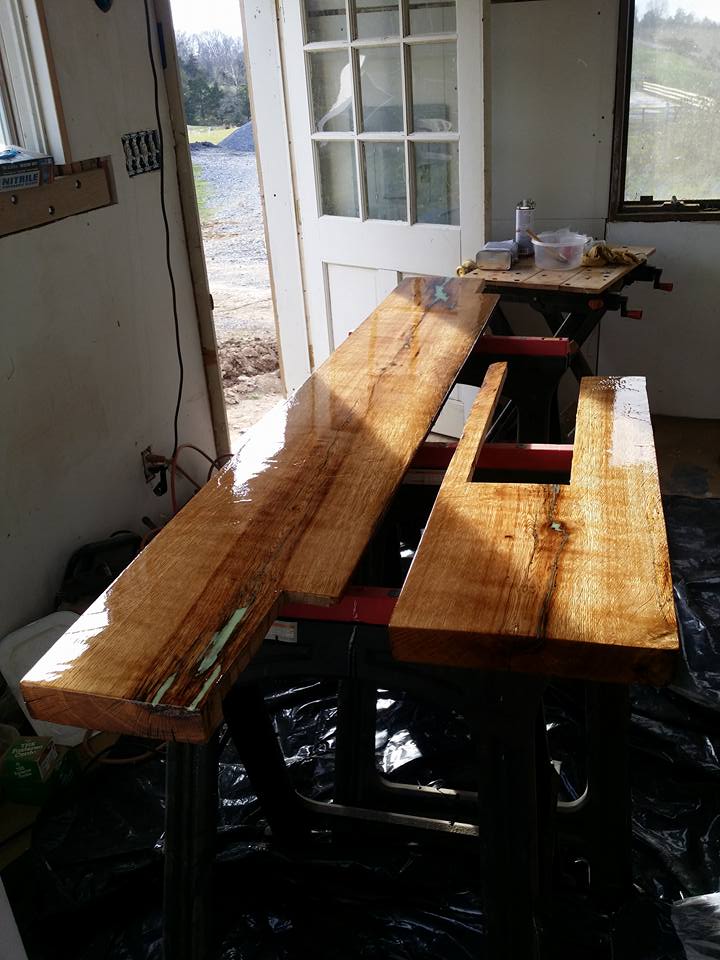
Again, while it sounds relatively simple when stated in a few lines of text, it actually took quite a few weeks to get from the wood pile to the wall and it involved a few thousand passes with both the sander and the finish.
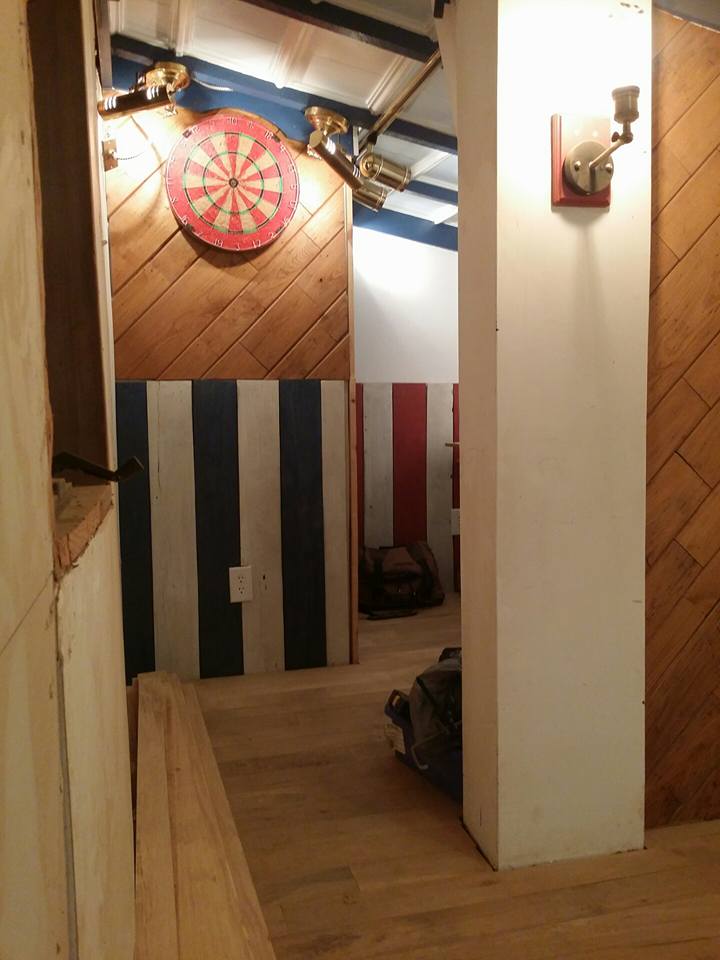
The circus mojo was similarly time-consuming. We had replaced a long stretch of board fence and hung on to the old oak boards. They looked like trash but with a few passes of the belt sander, it was pretty obvious that the ugly was relatively shallow and there was a lot of character beneath all the weathered and molded top layer. There were about 30 boards that got the sanding treatment. Then I stained them and hit them with a coat of poly to give it the old-rollercoaster look I was going for.
Since the walls above and adjacent to the boards were covered in chalkboard paint, I crafted a bit of wainscoting above the boards with chalk-holding grooves routed into them.
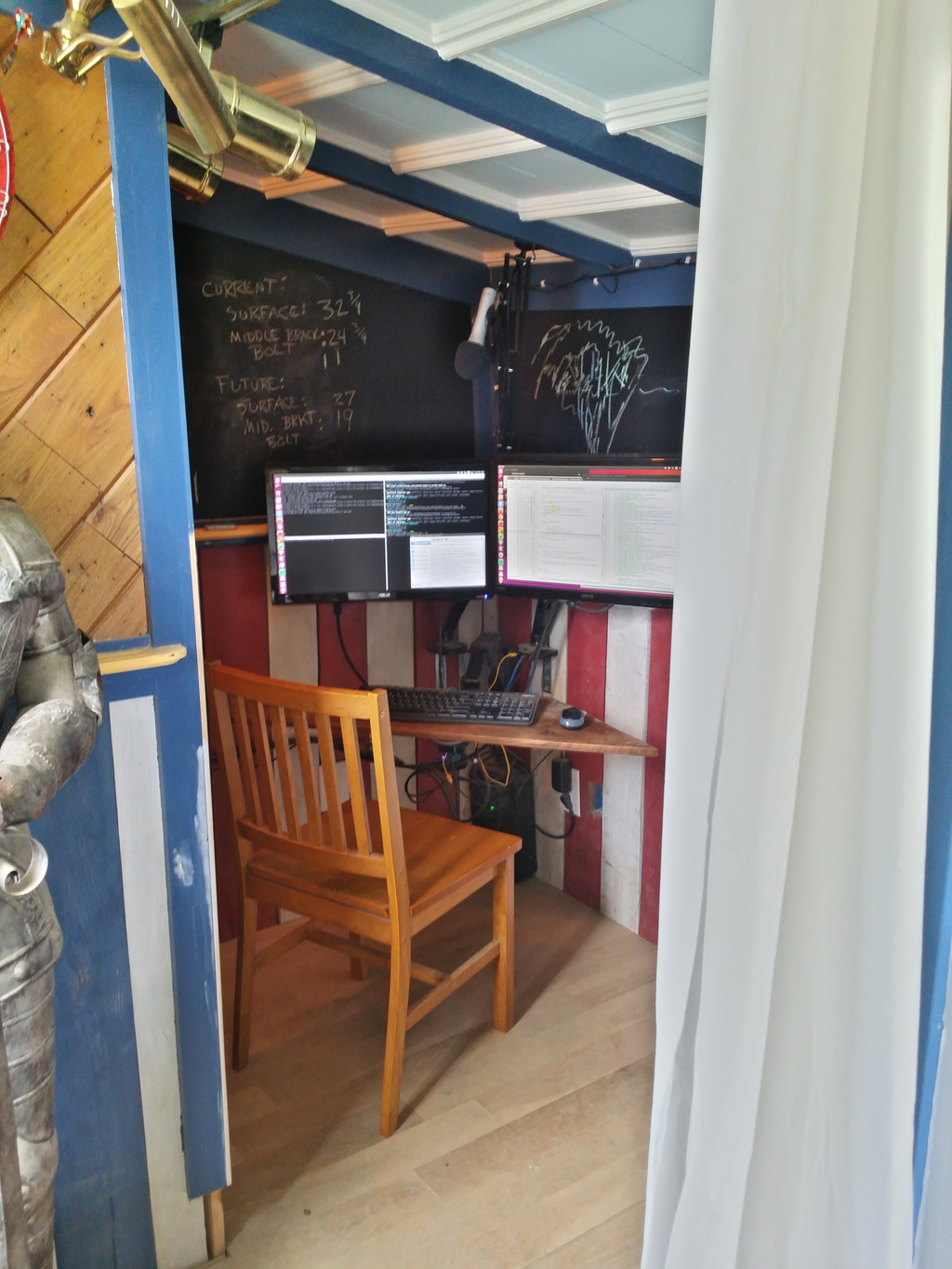
Once the funky circus walls were done, I moved in and started working from the new office. The wifi from the house wasn’t wonderful, so I upgraded my equipment. If feels very wired now, even though it really isn’t.


Finally, within the past couple of months, it’s really starting to feel like the creative space I’ve been striving for. I’ve resurrected various components of 20-year-old stereo systems and hung 6 speakers in strategic places to make sure I’m hearing tunes in stereo wherever I am in the building. Plus, a few weeks ago and with a lot of help from a friend I’ve known longer than I haven’t, I got the floor sanded and finished. They look amazing now.
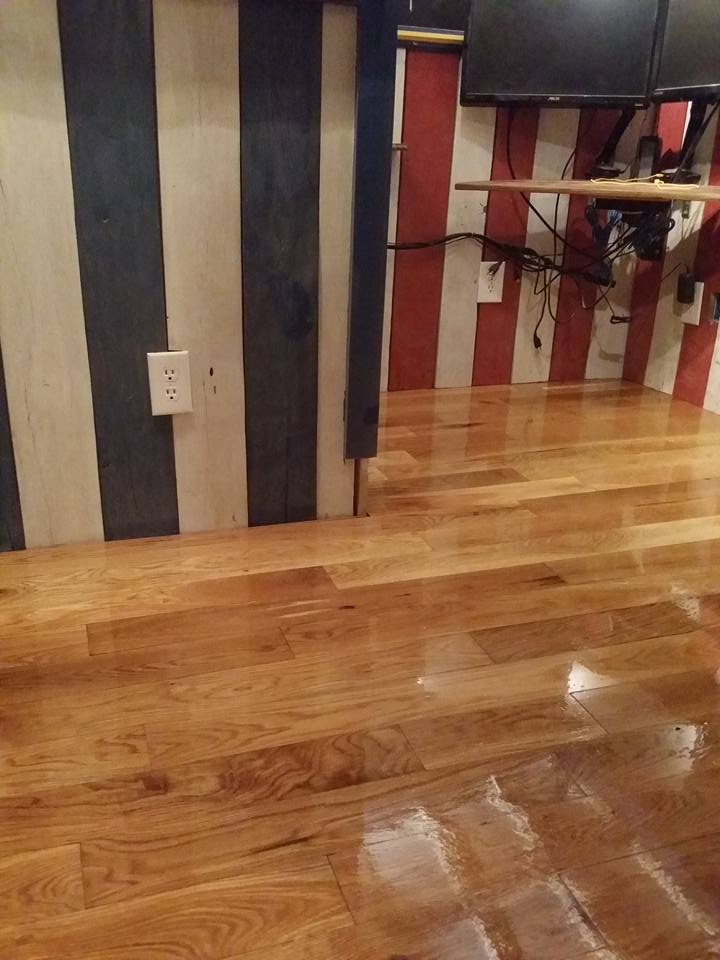
So, now that I’m moved in and operating from the confines of the new office/brewery, I’m starting to think about phase 2, the brewery. I’ve got a triple sink that needs legs and a faucet and I’ve got to figure out the cabinet requirements and, I suppose, I’ll finally have to make the call between electric and propane. I’ve got 220V outlets, but I’ve heard from a number of folks that I really want propane. We’ll see. I’ll probably listen to smart people and go the propane route.
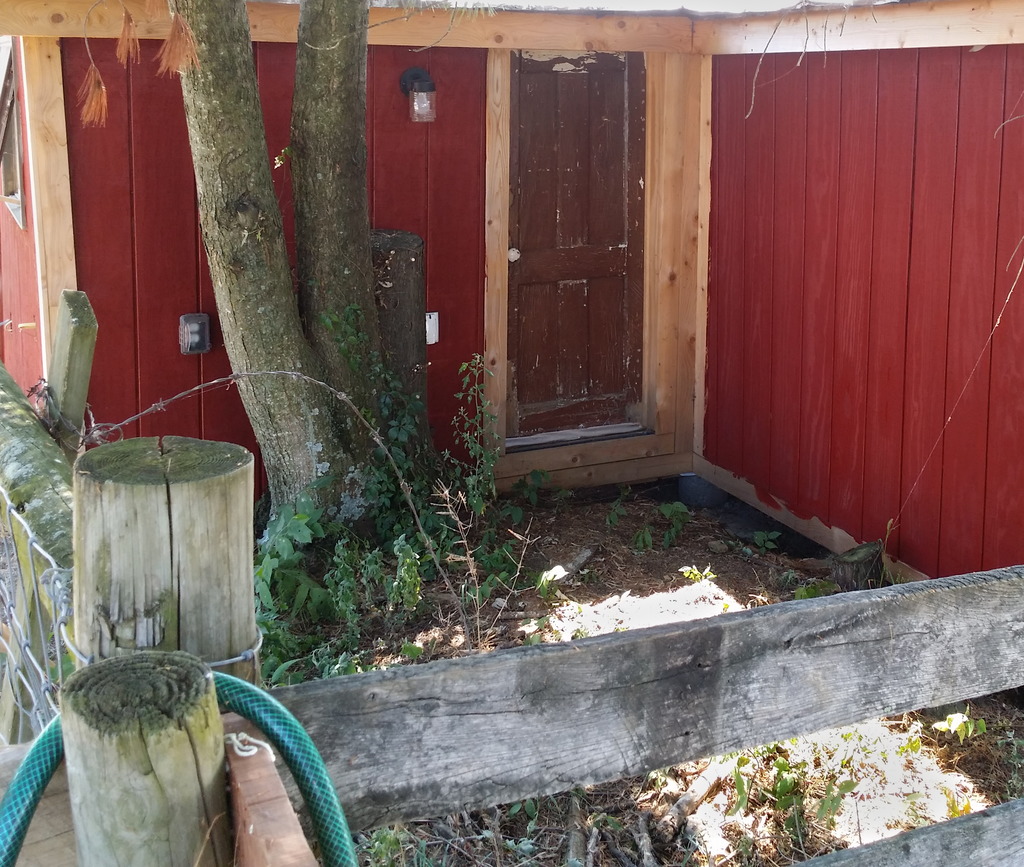
There’s also the matter of the “back yard,” this little 8x8 confine behind the building that’s accessible via the “hobbit door” (you have to duck) and wonderfully shaded and cool all day long. So far I’m planning a privacy fence, a pea-gravel base, some of those nifty hanging bulbs to light it up at night, and a couple of decent outdoor speakers.